In the previous blogs I looked at Sonic Superstars, and the things that the developers at Sonic Team, and Arzest did great. I also talked about the technical and design choices that I think really hurt the game. While I played through it I was reminded of all the wonderful things that I enjoyed in the franchise. It very much felt like a continuation of the elements that made Sonic Mania work so well. The art direction, level, and enemy design fit in the classic 2D style, even though the models were in 3D. The introduction of a new character named Trip, plus using individual Chaos Emeralds to change the game play was inspired. When I struggled with some boss encounters it showed that there were cracks on the facade. Trying some encounters over and over lent me to discover what type of gamer I was. In the end I had a favorable opinion of the game that gave me a lot of insight into myself. It allowed me to realize that the Sonic series was one of the rare titles that was globally appealing for a number of reasons. The first thing that drew me to the franchise was the character himself.
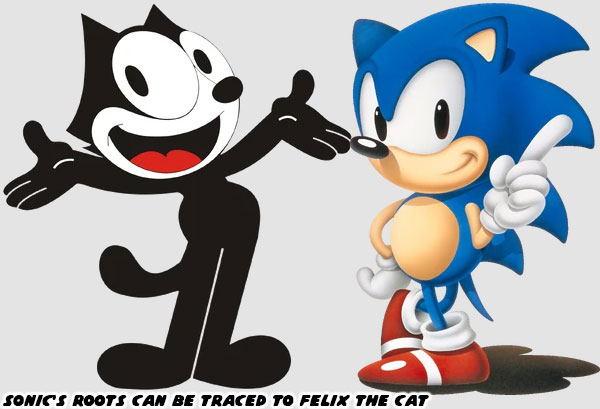
I stated previously
that I loved the art, and design behind the hero, and his friends. I never cared much for Knuckles though, but that was besides the point. I was a huge fan of the mascot style of character art. The cartoon star that created the movement was Pat Sullivan, and Otto Mesmer’s Felix the Cat. He debuted in 1919, almost a decade before Oswald the Lucky Rabbit, and Mickey Mouse. The large head, big expressive eyes, and animal features set a template that would be copied for the next century. The early US cartoon stars like Donald Duck, Bugs Bunny, or Flip the Frog wouldn’t have made it big without Felix. Sonic the Hedgehog, Tails the Fox, Knuckles the Echidna, Mighty the Armadillo, and Ray the Flying Squirrel all followed in the footsteps of Felix the Cat. They were descended from one of the greatest cartoon traditions the world had ever seen.
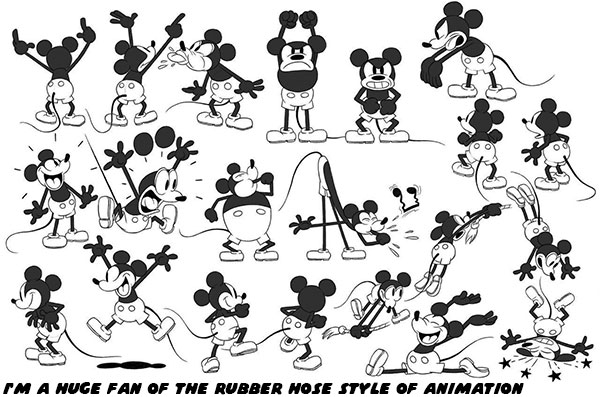
Although they were created by a Japanese team the Sonic art reflected my favorite form of American cartooning. The “rubber hose style of animation was the oldest form used in the US. The name was because the arms, and legs of these characters weren’t hinged as if they had bones. Instead they flexed like rubber hoses. Additionally the bodies on these characters were fluid. They could be pulled, stretched, and twisted like a rubber balloon. There was a sense of freedom in these cartoons that was liberating for artists. Although to be fair I was never good at drawing in a rubber hose format because my style was very rigid. It didn’t matter because I thought those early cartoon stars were so amazing. They could do the impossible, while still making their actions plausible. That tradition was rarely seen in modern cartoons, rare in video games, but not as rare in comic books.
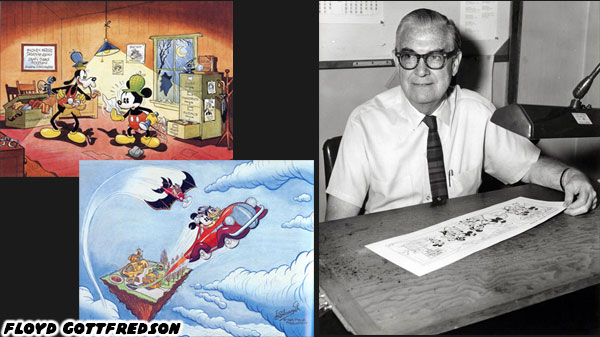
The Mickey Mouse comics illustrated by Floyd Gottfredson in the 1930’s set a standard for adventure storytelling featuring cartoon mascots. His comics kept the animated icon alive outside of the movie theater. Mickey would hang out with his friends in some stories, having fun with the other Disney stars. Then he travel the globe on an international mystery for longer arcs. A decade later Carl Barks raised the bar in the Donald Duck, and more important, the Scrooge McDuck comics. Comic books were the perfect format for expanding on the animated shorts. We could get to see the characters develop a personality. The writers, and artists presented a universe that was much deeper than could ever be shown in a cartoon. For the longest time I assumed that these stories were for children until I actually sat down and started reading the collected volumes. I was not only amazed by the art, but by the storytelling. It worked on multiple levels There was action for the kids, great character development for teens, and mystery for the adults. They truly were books for all-ages.
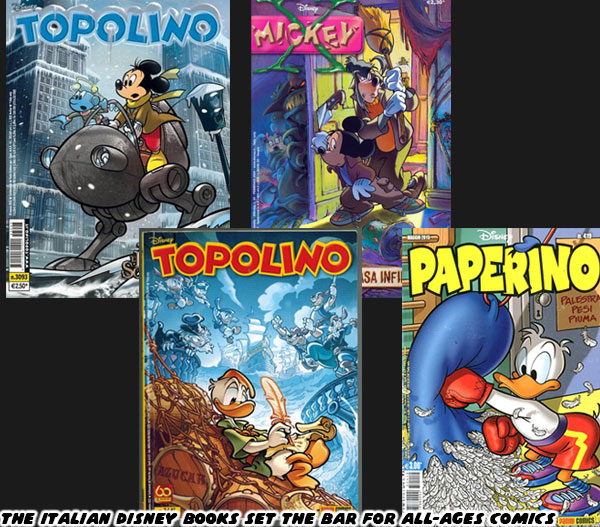
Comic books in the USA were mainly superhero titles. Often mature in tone, and not really created for all-ages. However overseas the Disney comics were still popular with families, and even adults. They were an institution in Italy, where the Mickey comics (Topolino) had been in publication for over 90 years. I believe that they were the greatest run of all-ages comics ever published. Multiple generations were raised on stories that were every bit as good as those created in the USA. I would argue that the elite Disney cartoonists cut their teeth drawing on the pages of Topolino. The best of these stories were serialized and translated to multiple languages.
I did a deep-dive on the Italian comics many years ago. The reason that I brought them up was because they were critical to keeping the characters popular. More than that they were important to spread the cartooning art form. You could only do so much in an animated short but the comics allowed the characters to live, and grow. They did more for audiences than the parent company did in the parks, television, or movie screens.
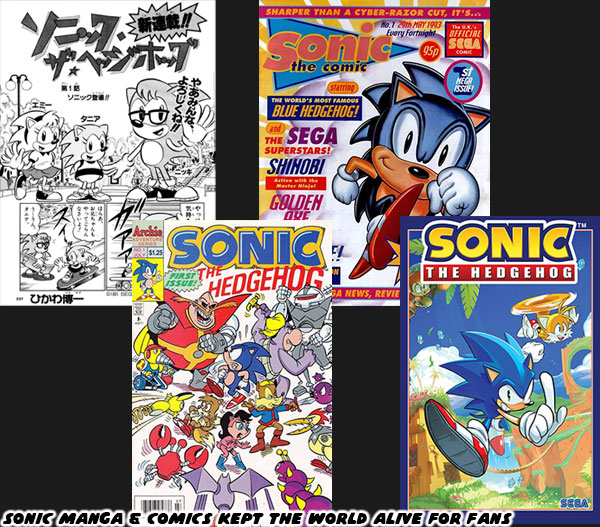
A similar thing could be argued for comics based on video games. Comic books could take a relatively short game, and give readers a cinematic experience. Udon was known for the Capcom books they published. Street Fighter, Mega Man, and Vampire / Darkstalkers were just some of the titles they released. Audiences got to follow the main, and side characters across a variety of story arcs. They allowed audiences to learn the dynamics between the stars, and any new faces introduced. As a fan of the mascot titles I was happy to see Sonic in publication. Granted not every editor, writer, or artist understood the games. This was especially true for many of the oldest issues. It seemed that the creators liked to make up stuff as they went along. The quality of the first comics didn’t matter to fans because they made the blue blur relevant. Whether in manga from Japan, or comics from the UK, and USA, Sonic had developed an international following. The most recent US comics from IDW were by far the best Sonic had ever appeared in print. The writing was amazing, and the stories stayed true to the games. Best of all the various artists captured the spirit of cartooning. They made young fans understand why the character appealed to older audiences, just as much as the Topolino comics helped kids understand why Mickey Mouse was beloved by their parents.
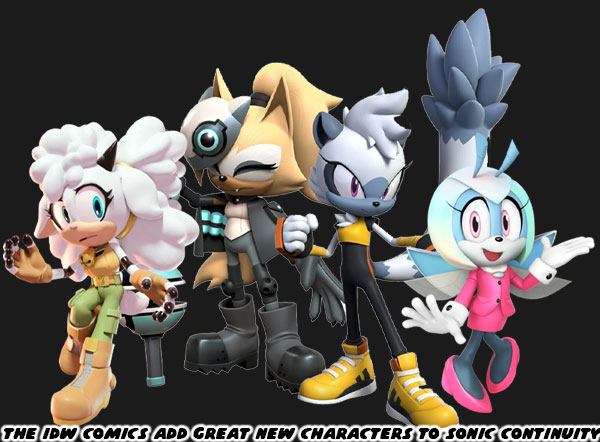
The creators at IDW were also able to expand the Sonic comic books to include new faces that were interesting in their own right. For example Lanolin the Sheep, Whisper the Wolf, Tangle the Lemur, and Jewel the Beetle were citizens-turned-freedom fighters. Their story arcs, and contributions in the comics made them very memorable. They were adventurers, sometimes with a tragic past, all rising to meet the challenge. They complimented all of the established heroes, and added their own unique dynamic to the stories. For long-time fans like myself I thought that these were characters that would be amazing to follow in a game. More than anything the Sonic comic books managed to remind audiences that the universe covered in the game series was far more expansive, and serious than we sometimes thought. Sonic Team managed to create a world that seemed straightforward, and easy to digest. Sonic was the good guy, and Eggman was the bad guy. He kidnapped animals to power his robots. It was up to Sonic to set them free. The formula hadn’t changed much in over 30 years, yet the stakes had always been incredibly high. Without Sonic, and his friends, then there was nothing preventing Eggman from conquering the world.
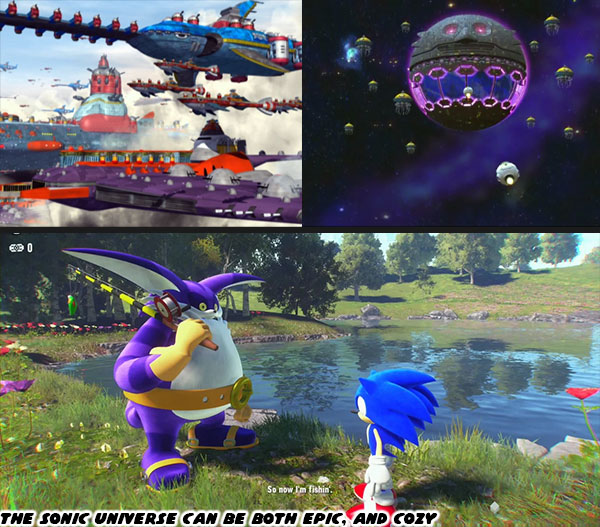
The threat that Dr. Eggman presented was epic in scope. He didn’t just raise an army of minions, he created an entire armada of war machines. He had a fleet of flying warships, giant robots, autonomous factories, laser satellites, and space stations with enough power to take over a planet. The fight had to be taken to Eggman to prevent him from ruling the world. There was nothing easy about the threats that Sonic, and his friends faced in every encounter. At the same time the designers at Sonic Team didn’t want to make the game feel heavy-handed. Yes the characters were fighting against impossible odds, but at this world was also a cozy place to live. The studio made sure to show audiences what Sonic was trying to protect. Sega wanted to remind us that this world was a beautiful place filled with loving characters. There were friends that wanted to enjoy a picnic with our hero, or perhaps do some fishing with him. These gentle characters were set against a backdrop that was quite serious. Being the protector of the innocent was the heart of several IDW story arcs.
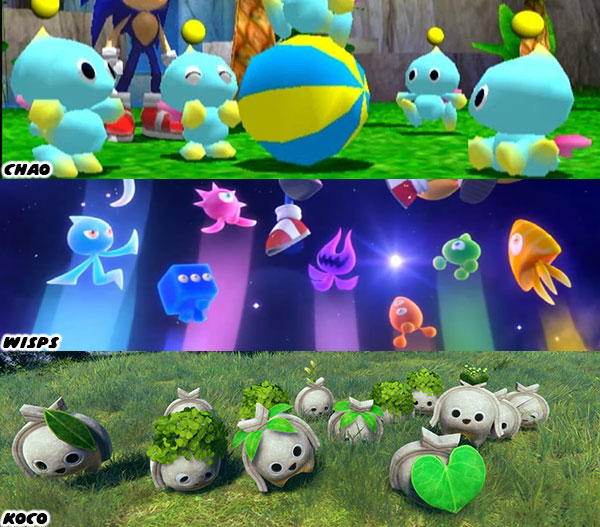
Sonic Team created different types of innocent creatures that Sonic, and his allies had to protect. In most games the animals trapped within the robots were the obvious ones. As the games evolved we were introduced to the Chao in Sonic Adventure, then the Wisps in Sonic Colors, and most recently the Koco in Sonic Frontiers. Those minor characters were adorable beyond description. However when you placed them within the context of the stories they were also tragic figures. Each of the characters had survived catastrophic trauma. An entire planet of Wisps were enslaved by Dr. Eggman for his cruel experiments. The Koco were the memories of the ancient aliens that brought the Chaos Emeralds to the planet. Sonic had to complete their memories, and reunite their ghosts so that they could have some closure. The Chao were the de-evolved descendants of those alien refugees. They were also nearly wiped out in a raid by the Echidnas a millennia ago. Even the cutest characters in the franchise were important to the story.
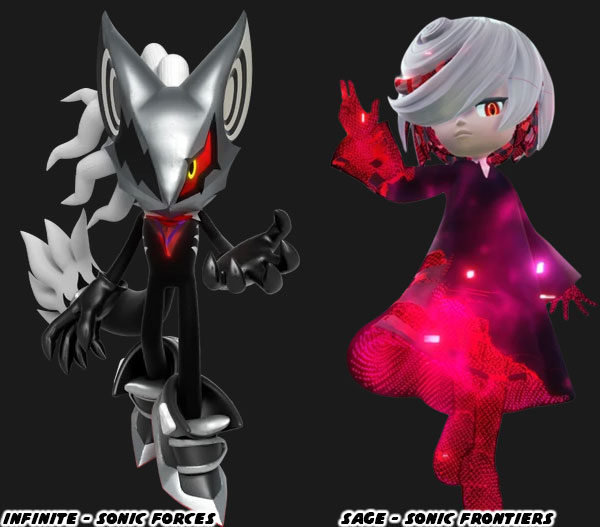
Felix the Cat started the tradition of cartoon mascots more than 100 years ago. Sonic the Hedgehog helped bring the art form to a new generation through video games. The creators at Sega, Sonic Team, and at IDW helped it evolve across multiple formats. Whether it was an animated short for social media, a live-action movie, or an award-winning comic book run. There was no doubt that cartoons were alive and well. The lore of the game series was already robust, and the comic books went much deeper than casual fans could have ever known. The characters they introduced in the past decade could still look cute, and universally appealing, but they had now grown to include shapeshifting assassins, psychic madmen, and even sentient AI. Heroes, and villains in the Sonic canon were colorful, memorable, and awe-inspiring. The games they were featured in evolved in unique ways. I’ll trace it out in the next blog. Until then I’d like to know if you have a favorite mascot character. Or if you even like cartoons at all. Tell me about it in the comments section. As always if you enjoyed this blog, and would like to sponsor me
please visit my Patreon page and consider donating each month, even as little as $1 would help make better blogs and even podcasts!


















No comments:
Post a Comment